Lothaen here: I would like to introduce you to our guest writer who has recently stepped in to assist me with product reviews! While I was engrossed in the first Straight Jacket article, I bumped into a writer who has written many of his own guides and articles. He agreed to jump in and review some of thr product backlog here at TNR! For now he wishes to remain anonymous. Without further ado, here is the FC1 Test and Eval:
Introduction:
The DI Optical FC1 Red Dot Sight is a South Korean red dot developed for their 5.56 service rifles. The link provided contains the factory specs, but you can also see an abbreviated version in the users manual pictured below.
It is essentially an Aimpoint T1 competitor but with a built in mount and not quite as pricey. The weight and size are comparable. The battery life is not, but we will get into that later. Full disclosure, I was provided the DI FC1 for free to test, but I can assure you that this did not color my impressions whatsoever.
The Basics:
A picture is worth a thousand words, and a good video is worth at least ten thousand. The Military Arms Channel did an excellent basic review of the DI FC1 which can and should be seen here. Seriously, control+left click that link, watch the video, close the tab and come back and read the rest of this review (because we’ve done testing they did not at MAC). Done? Alright. So as you saw in the MAC video, the battery is easy to change (no need to re-zero like an RMR), the mount is almost QD, and it adjusts like a Leupold Deltapoint Pro in that you cycle through the brightness settings with one button which is easy to do. The dot is crisp and bright, crisper than my Holosuns for sure. You also see in MACs video that it can survive basic drop and water testing. And it is small, oh so conveniently small and light. Another picture below to drive the point home:
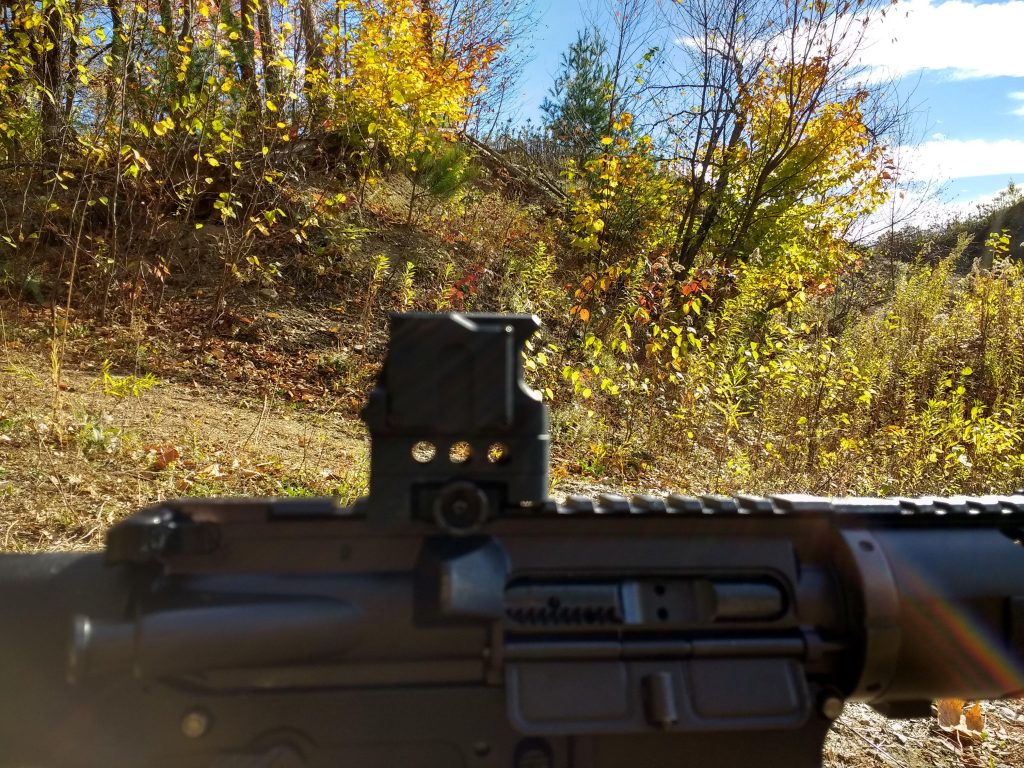
The Testing Phase 1:
Upon receiving my sample in April of 2017, I threw it on top of my home brew AR15 and took it along whenever I went to the range. For testing it was also swapped on to a Tikka T3x Lite in .308, and a break action CVA 20 gauge shotgun. I logged rounds fired and as of today it has just over 3000 rounds of assorted .223 and 5.56 loads through it, 100 rounds of .308, and 100 rounds of 20 gauge bird shot.
The loads used are as follows:
– 500 Rounds of Norma 55gr TAC FMJs (.223)
– 1000 Rounds GECO 55gr FMJ (.223)
– 500 Rounds Federal XM193 (5.56)
– 1000 Rounds Federal AE 55gr FMJ (.223)
– 50 Rounds Stillwood 77gr TMK (.223)
– 100 Rounds Federal AE 150gr (.308)
– 100 Rounds Remmington Lead Game Bird Shot (.20 Gauge)
This was over the course of 9 range trips and some at home on the property testing. Over the course of 7 months and 3000+ rounds of testing, the DI FC1 was boring and predictable. It held zero through all of the testing (once the screw was tightened down with a screw driver, no loctite was used although it is recommended). It was easy to adjust the brightness settings for day and evening use, although being able to go up or down instead of just cycling is faster. The FC1 was fast to use for speed at 10-25 yards, and has a small enough dot to be more than precise enough at 100-200 yards. The adjustments are precise enough to really dial it in for a red dot, making head shots on steel or paper a breeze. Directly comparing it to a Trijicon RMR 2.0 and a Holosun 403 the glass is clearer on the DI FC1 and has less of a tint. The trade off is that it is also the brightest at night looking out the front of the optic. So in sum, it works as well as any other quality red dot for basic use.
Another bright spot is that during 7 months of testing I have not changed the battery. The auto-shut off works as intended, so while it has only 5000 hours of battery life vs. an Aimpoint (or similar) at around 50,000 hours, the auto-shut off means that you can probably replace your battery yearly unlike say an EOTech. However there is one caveat here which is that there is an auto-on feature which could go wrong, but likely won’t and hasn’t for me (watch the MAC vid, he cannot outrun it). While it isn’t quite as foolproof as an Aimpoint just always being on, the auto-on optics from many manufacturers seem to be quite reliable, the DI FC1 being no exception. I like an optic I have to think ZERO about for a bump in the night, and the FC1 that it might as well be zero.
The Testing Phase 2:
So yet another boringly reliable red dot? Not quite. While drop testing like MAC did is a good start, a lot more can happen in the field that can throw off an optic. For example, the EOTech heat-shift scandal, which for those of you who’ve been hiding under a rock for the past few years was a problem with EOTech optics that massively shifted zero under very hot and very cold conditions (follow the link for more details). While EOTech has since fixed the issue it is still a good idea to test your optics no matter who makes them for similar problems. Another thing that happens to optics in the field, is they get bashed off of vehicles…a lot. Doors, frames, benches, you name it. Not all mounts (especially factory supplied ones) are equal, and not all of them will hold zero when this occurs, which can be a very large problem. Last but not least, recently some very good testing was done to show that many popular optics exhibit unacceptable levels of parallax shift including the Aimpoint T1. So after 3000 rounds of testing, we set out to see if the DI Optical FC1 suffered from any of the above mentioned issues.
– Baseline
We used five shot groups over the course of one afternoon to try and get a rough idea of how the DI FC1 would hold up to the abuse mentioned above. Allow me to stress that this is not a scientific test, many variables were not eliminated, and this is a sample size of one optic. However the results we feel are indicative of the performance of this one optic, so you may find that other FC1s perform that same way.
The conditions on the day were as follows: 78 Degrees Fahrenheit, 59% Humidity, 30Hg BP, at 600ft above sea level.
The target was placed at exactly 50 yards, confirmed by our Ziess LRF.
The target was a cardboard box with diamond targets attached, seen in the distance at the first berm on the right below.
The rifle setup used was a home built AR15 which the FC1 had ridden on for the majority of phase 1 testing. Of note it is using a Harris 9-13in bipod, Weibad rear squeeze bag, which in combination with the free floated Lothar Walther barrel makes this AR a very accurate AR when using high quality ammunition. For testing we were not using match ammo, but rather American Eagle 55gr FMJ .223 loads as these are cost effective and generally do 1.5moa out of this particular rifle. More than accurate enough to do this kind of testing. Below is the rifle just before the first groups were fired, after confirming zero. The setup was steady enough to produce the needed accuracy for this test.
We started with one five round group as a control. It mirrored our experience with shooting this setup with this ammo during the first phase of testing. At 50 yards, the 2moa dot covered almost the entire small diamond. Below is what is to be considered the control group.
Not the best group ever shot, but it shows that with one exception, the optic is slightly high and to the right, with the center being about half and inch from POA.
– Mount Removal
After shooting the first group, we removed the optic completely, and then remounted it, torquing it to the same spot on the screw again. It produced the following group.
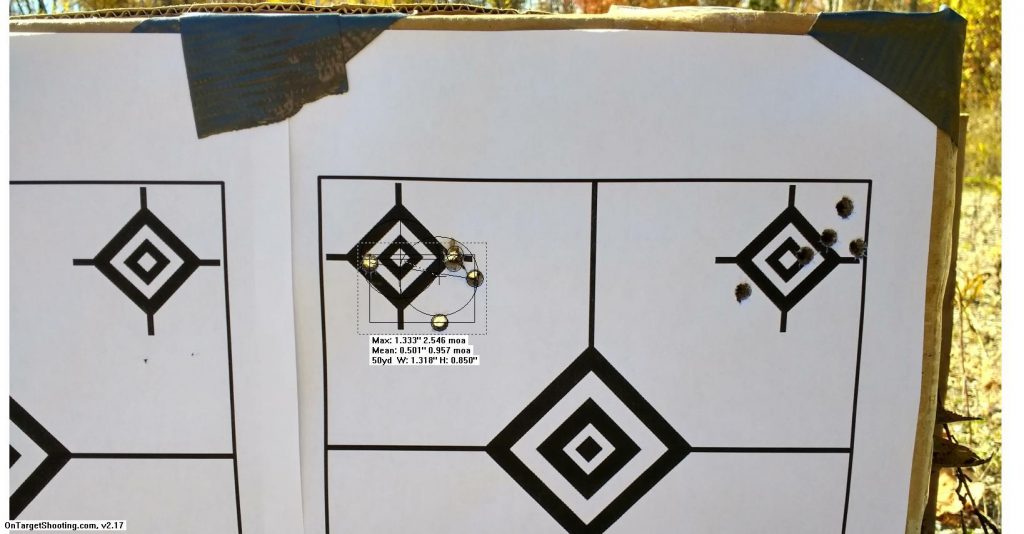
So we are yet again about half and inch to the right of the POA, but this time a little low, the difference being about a third of an inch between the average POI of the first group, and POI of the second group. Within margin of error in other words.
– Impact
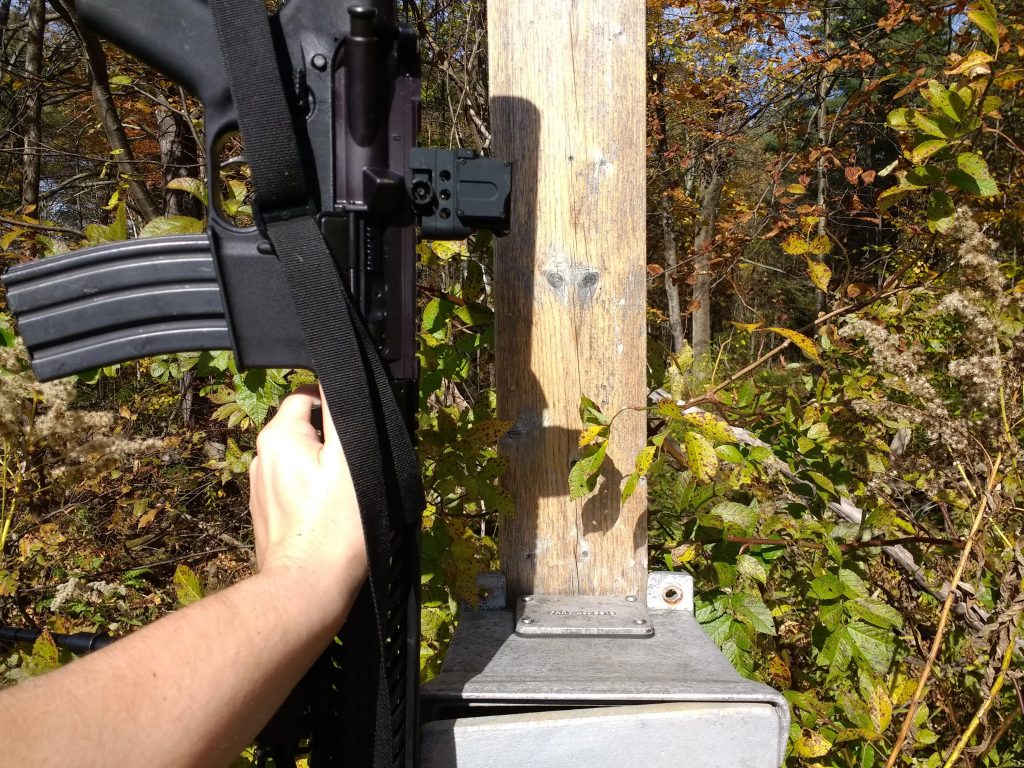
With the optic attached and turned on, we proceeded to bash (and I do mean bash) it against an empty electrical box from the front, rear, and side. This put significantly more force on the optics mounts and internals than a simple drop test.
After sufficient bashing, we shot the following group.
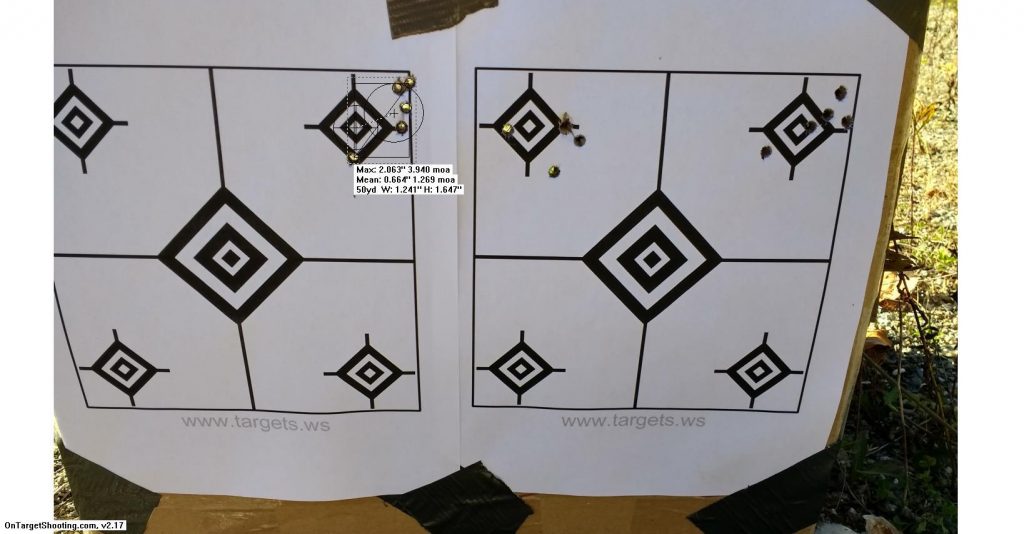
It seems as though vigorous simulated vehicle dismount impact simulation (long for bashing) has little to no effect on POI, which was just slightly over half and inch to the right and like the first group, slightly above POA.
– Heat
We then took a paint stripping heat gun and used it to warm the mount to just over the 125F Degree limit DI states on their website. You can see some of the marks from the last test on the optic below.
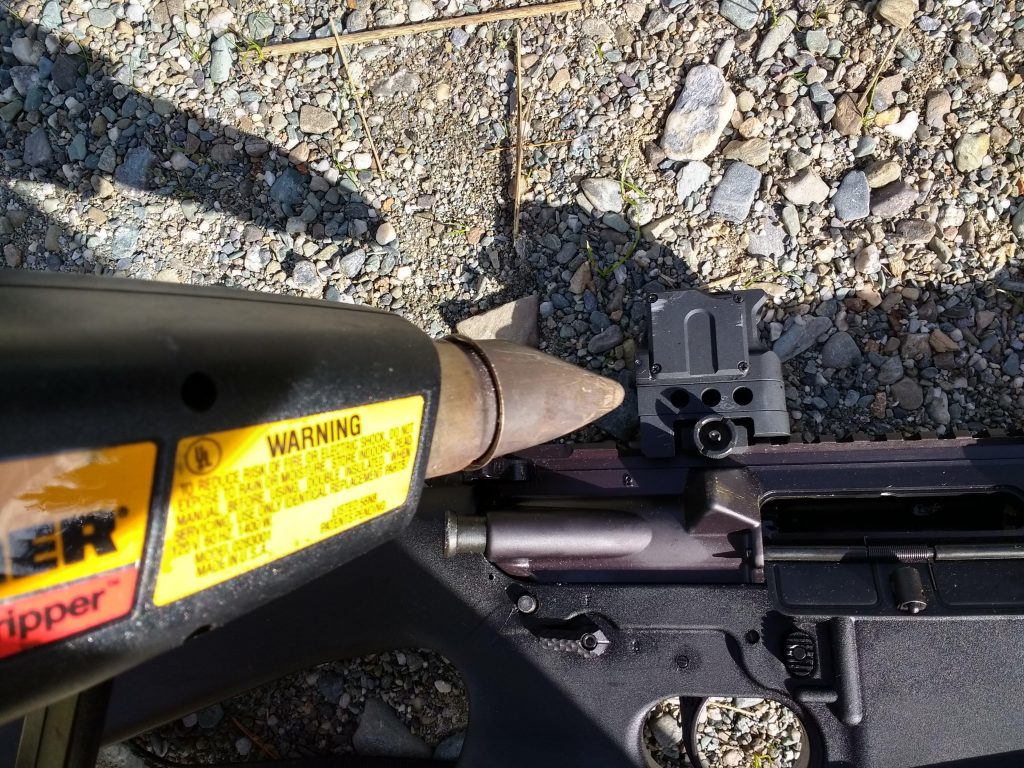
After heating, we fired another 5 shot group. The stock was almost too hot to touch, so I used a blanket to protect my face when firing this group.
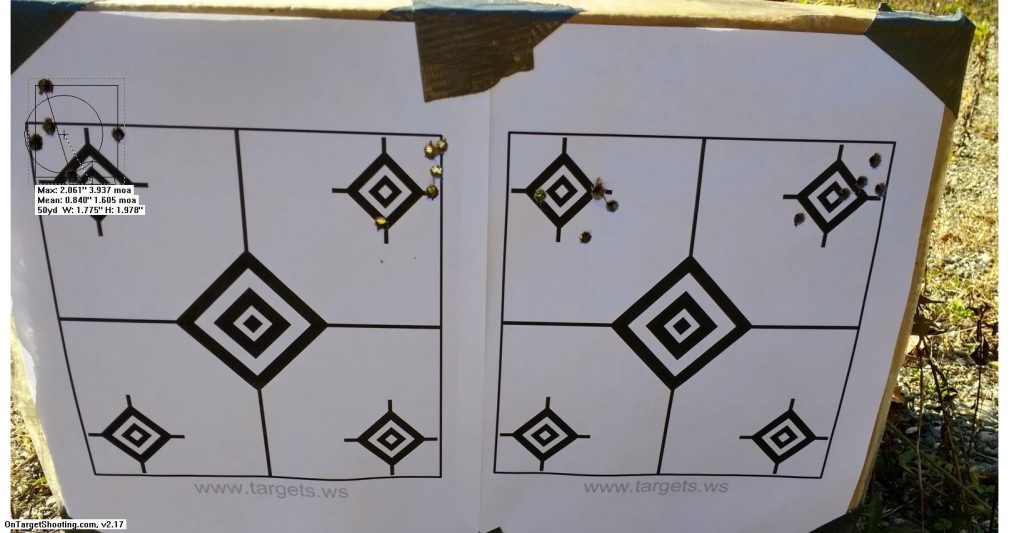
As you can see, the 125F degree limit is certainly no joke. The POI shifted considerably compared to the other groups. It was now about one inch high and almost a half inch left. So while it may seem unlikely that your optic will ever get that hot, remember many sandy places around the planet can certainly get BLACK items that hot in the sun, and the same goes for the inside of cars in very hot areas as well.
– Cold
At this point we removed the optic, place it in a small tub of water, and froze it in a meat freezer set to -20F degrees, which is five degrees above the operating temperature for the optic as per DI’s website.
Before:
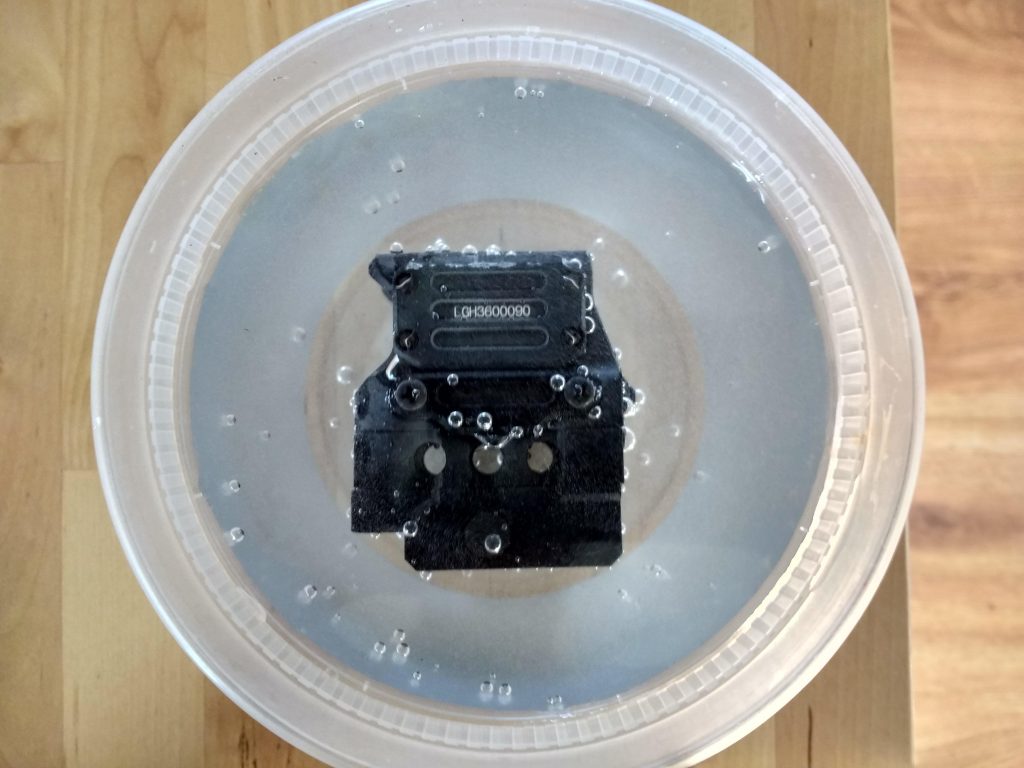
After (pen cap for scale and to show ice):
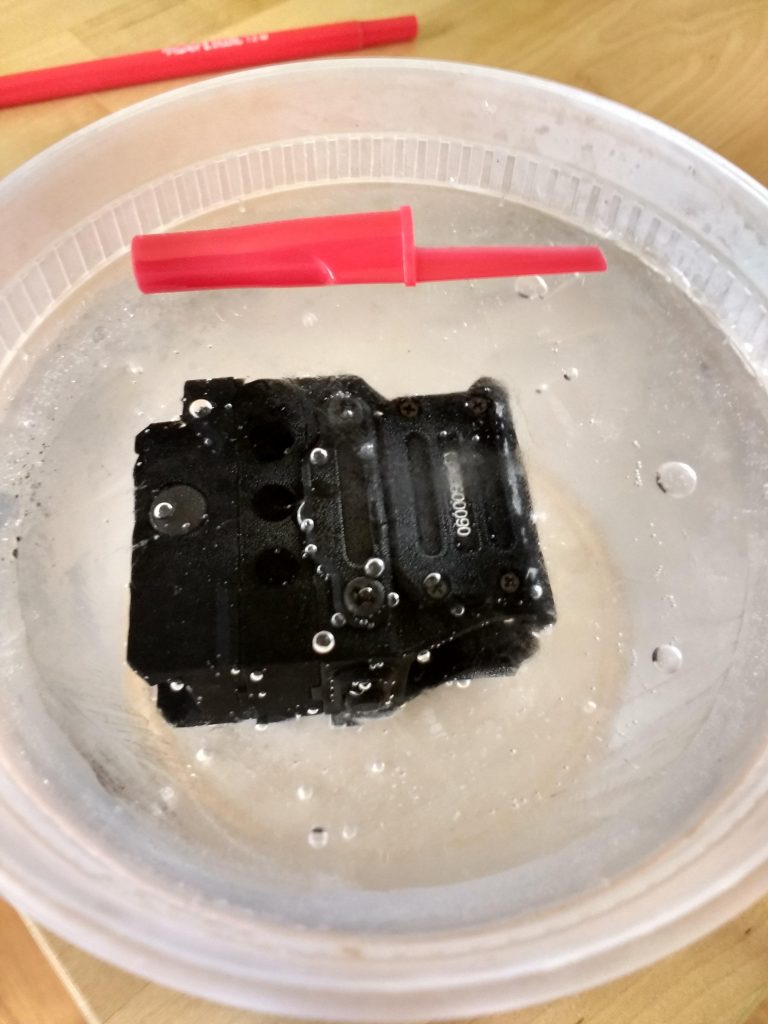
We chiseled it out and again attached it to the rifle. We then shot another 5 round group.
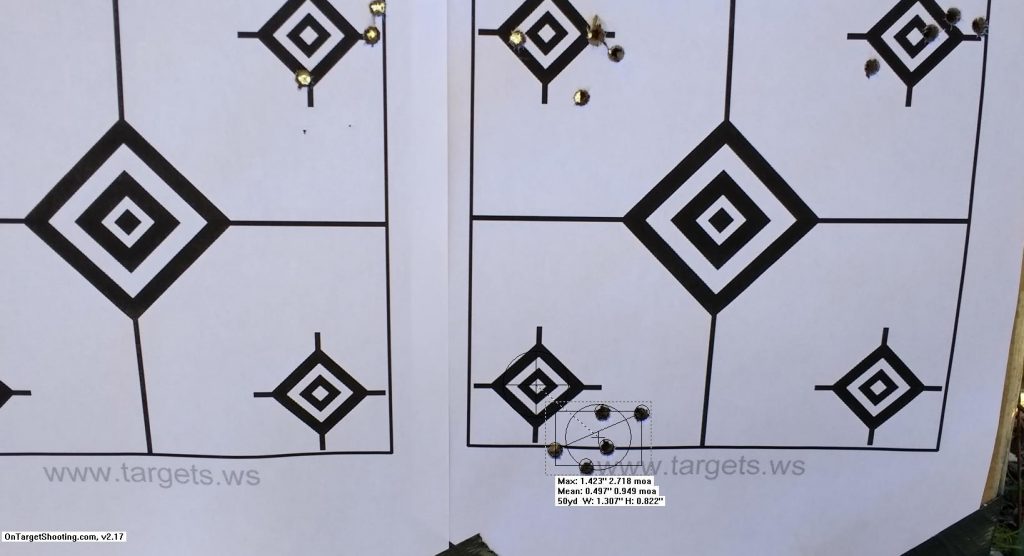
As you can see, the cold shift was interestingly almost the exact opposite of the heat shift. That is to say POI ended up a little over an inch down and to the right of POA. Again, the temperature warnings according to DI are clearly to be taken seriously, and it looks like as they are approached shifting of zero will start to occur. Cold shift is a bit more serious of a concern depending on where you live. Again, while it might not be common, there are plenty of places where you will find -20F temperatures during winter in the northern USA and around the world. This is especially true in places like Alaska, North Dakota, and Montana, so be aware when selecting an optic for outdoor winter use that the DI FC1 will exhibit cold shift. On the plus side though, even with the extreme temperature shift from ~-20F to ~78F there was no internal fogging of the optic. The outside fogged, but was quickly and easily wiped away with a finger and didn’t effect function.
– Parallax
The last test was a parallax test which was an abbreviated version of the one done in the study above. While our methods are not valid to add to their testing, they are revealing none the less.
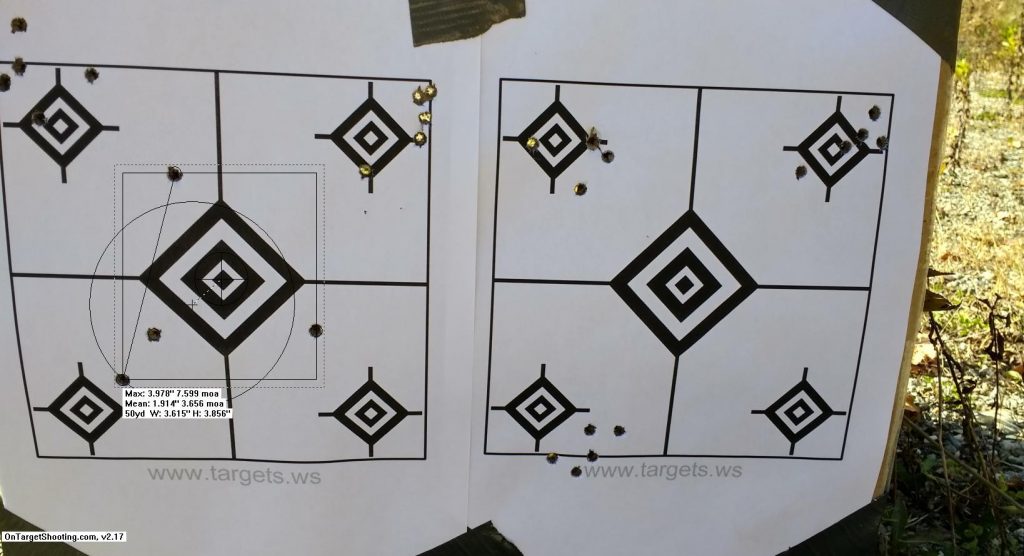
You hardly need OnTarget (the software used to generate these images) to see the massive amount of parallax shift that occurs as one’s head is moved behind the FC1. Each of the four shots shown here were taken with the center left diamond as the POA. I would then move my head to the furthest position up, left, right, and down with the dot still being visible. I would then correct the POA back to the center of the diamond as it will have shifted significantly and take the shot. Even with the final POA correction, there is still about a 4moa shift when the shooter’s head is in a non-ideal position behind the optic. Accounting for the POA correction, I’d estimate about 10moa of Parallax shift on average. This puts this optic just slightly ahead of an Aimpoint T1 at around 12moa, but well behind an Aimpoint T2 at about 4moa, and still further behind an EOTech at 1moa.
Conclusion:
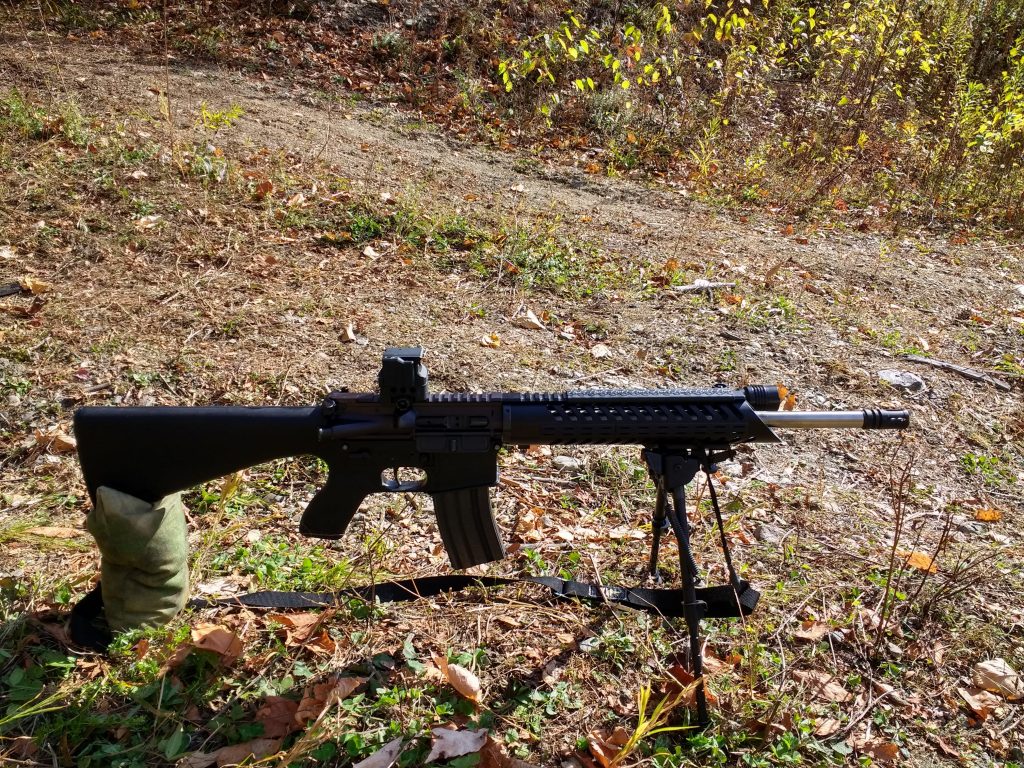
So after all that, what do I think about the DI Optical FC1? I think that for home defense and general range use, it is a great lightweight option at a decent price point. Basically any time 50y+ shooting from awkward positions or extreme temperature isn’t going to be in play, the DI FC1 will work very well. I’d wager that is the vast majority of the readership of this blog, so if you fit into this category, don’t hesitate to pick one up. It has the added bonus of the built in mount which is very durable to impact. It could also be squeezed into a combat , SHTF, or duty role in a pinch, especially with the night vision settings (although others with NV can see the dot from in front of the optic). But with the amount of hot, cold, and parallax shift there are simply better optics out there I’d trust my life to in those situations like the Aimpoint T2 (which happens to cost 2x as much let it be said).
Wrapping Up:
Alright, Lothaen again here: Tons of rounds put down range on this minuscule optic! Special thanks to our mystery writer for the T&E. Any questions or concerns? Comment below!
Disclaimer: The FC1 was sent to www.thenewrifleman.com for T&E as part of a group review package of optics. TNR LLC does not make any financial gain from any links in the review article above.





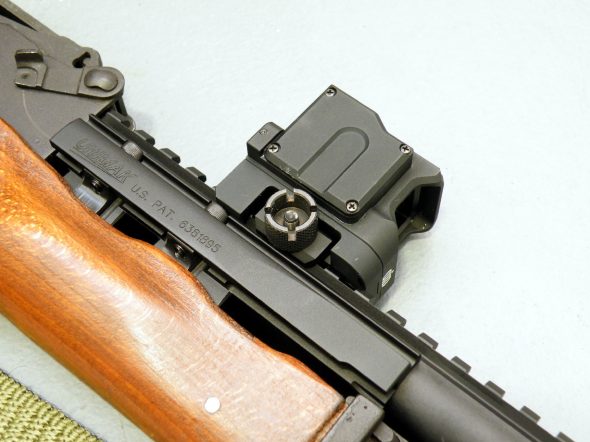


“Virtually parallax free”. LOL
Though I wonder how much if it would tighten up at 100+yds.
Where are the elevation and windage adjustment screws?